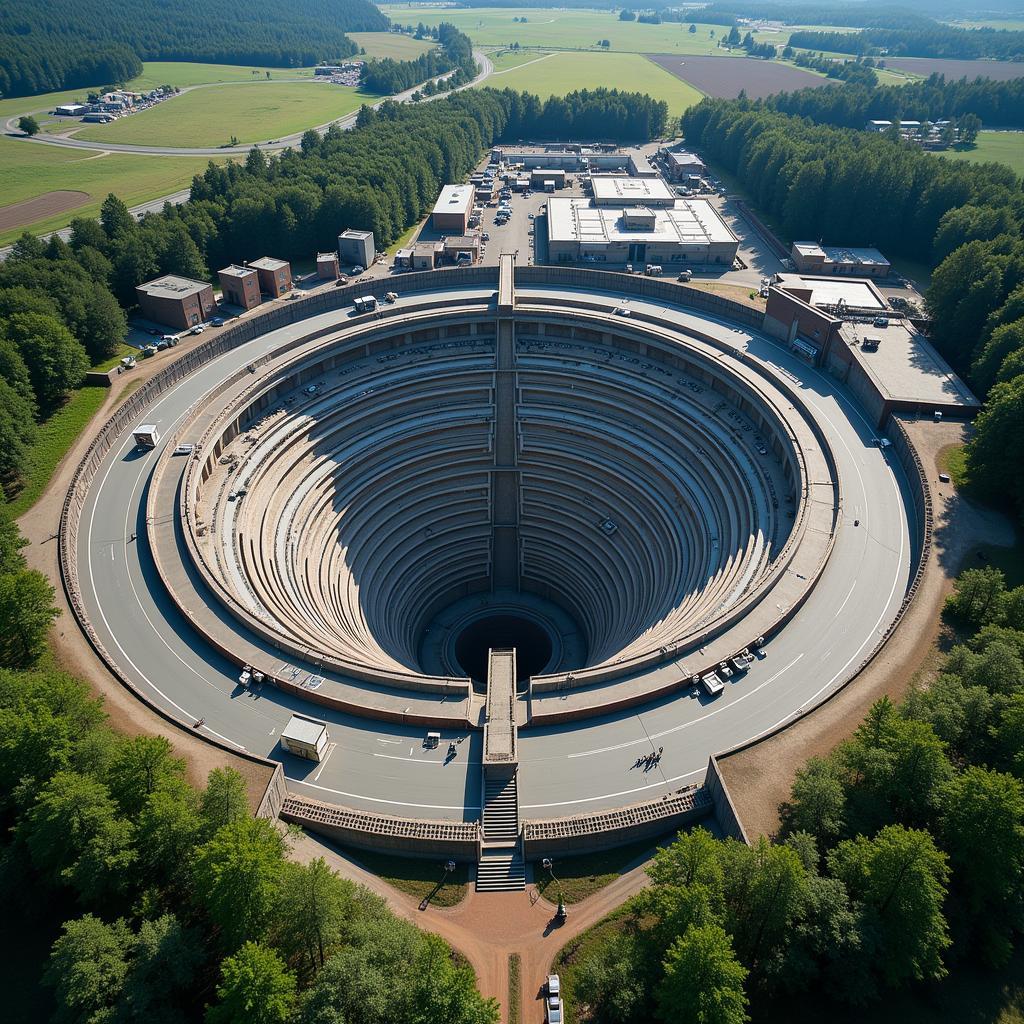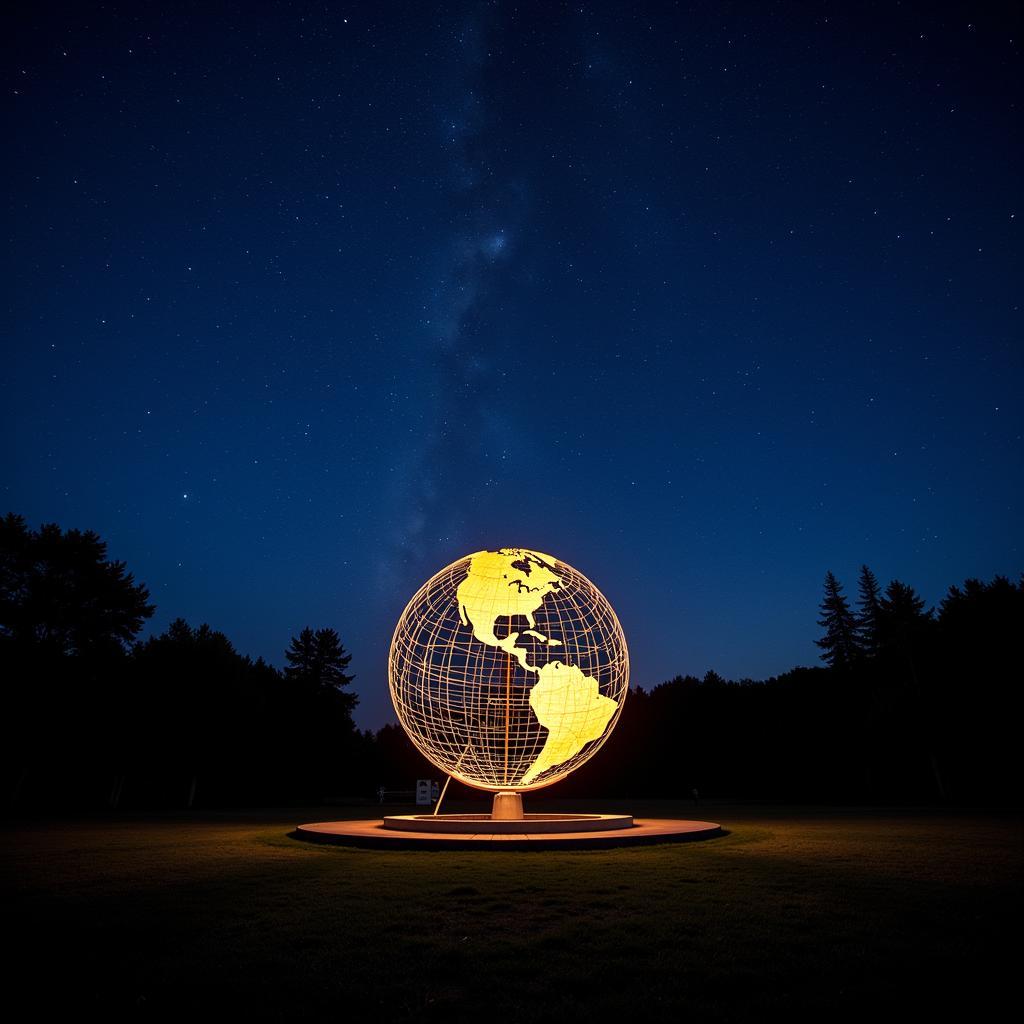The European Organization for Nuclear Research, more commonly known as CERN, often piques curiosity with its enigmatic aura. Situated on the Franco-Swiss border near Geneva, Switzerland, CERN isn’t your typical research facility. It’s the world’s largest particle physics laboratory, home to some of the most groundbreaking scientific endeavors in human history.
Delving into the Heart of Matter: CERN’s Primary Mission
At its core, CERN’s mission is to unravel the fundamental secrets of the universe. They do this by exploring the building blocks of matter – the elementary particles – and the forces that govern their interactions.
Imagine trying to understand how a complex machine works, but instead of disassembling the entire machine, you collide its individual parts at incredibly high speeds and observe the resulting debris. This, in essence, is what CERN does. They utilize powerful particle accelerators, like the Large Hadron Collider (LHC), to smash protons together at near-light speed, creating a shower of subatomic particles. By studying these particles and their behavior, scientists can piece together the fundamental laws that govern our universe.
 CERN's Large Hadron Collider: An Aerial Perspective
CERN's Large Hadron Collider: An Aerial Perspective
Beyond the Big Bang: Unveiling the Universe’s Mysteries
CERN’s research extends far beyond just understanding the fundamental constituents of matter. Their work has profound implications for our understanding of:
- The Big Bang: By recreating the extreme conditions present shortly after the universe’s birth, CERN scientists gain valuable insights into the Big Bang and the evolution of the cosmos.
- Dark Matter and Dark Energy: These mysterious entities constitute the vast majority of the universe’s mass-energy content. CERN’s experiments aim to detect and characterize these elusive components, shedding light on their nature and influence.
- The Fundamental Forces of Nature: CERN investigates the four fundamental forces – gravity, electromagnetism, the weak force, and the strong force. Understanding these forces is crucial to comprehending the universe’s fundamental workings.
A Global Endeavor: Collaboration and Scientific Advancement
CERN is not just a European endeavor; it’s a global collaboration. Thousands of scientists from over 100 countries contribute to CERN’s research, making it a shining example of international scientific cooperation.
“CERN’s unique environment fosters collaboration and knowledge sharing on an unprecedented scale,” explains Dr. Maria Ramirez, a theoretical physicist working at CERN. “The discoveries made here have the potential to revolutionize our understanding of the universe and drive technological advancements that benefit all of humanity.”
The Future of Discovery: Unanswered Questions and Ongoing Research
While CERN has already achieved remarkable breakthroughs, many mysteries remain unsolved. The search for new particles, the nature of dark matter and dark energy, and the unification of fundamental forces are just a few of the challenges that continue to drive research at CERN.
As the LHC undergoes upgrades to increase its energy and luminosity, scientists eagerly anticipate a new era of discovery. The future of particle physics is bright, and CERN remains at the forefront, pushing the boundaries of human knowledge and inspiring generations to come.
Conclusion: A Beacon of Scientific Exploration
The European Organization for Nuclear Research stands as a testament to humanity’s insatiable curiosity and our relentless pursuit of knowledge. Through groundbreaking research and international collaboration, CERN illuminates the hidden workings of the universe, bringing us closer to answering some of the most fundamental questions about our existence.
 CERN: Illuminating the Future of Science
CERN: Illuminating the Future of Science
FAQs:
- What does CERN stand for? CERN stands for the European Organization for Nuclear Research.
- Where is CERN located? CERN is located on the Franco-Swiss border near Geneva, Switzerland.
- What is the Large Hadron Collider (LHC)? The LHC is the world’s largest and most powerful particle accelerator, used by CERN to collide protons at near-light speed.
- What are some of CERN’s major discoveries? CERN is credited with numerous discoveries, including the Higgs boson particle, neutral currents, and the World Wide Web.
- How can I get involved with CERN? CERN offers various opportunities for students, researchers, and professionals in STEM fields. Visit their official website for information on internships, fellowships, and job openings.
Need Assistance? Contact Us:
For inquiries or further information, please don’t hesitate to contact our 24/7 customer support team:
Phone: +84 904 826 292
Email: research@gmail.com
Address: No. 31, Alley 142/7, P. Phú Viên, Bồ Đề, Long Biên, Hà Nội, Việt Nam.